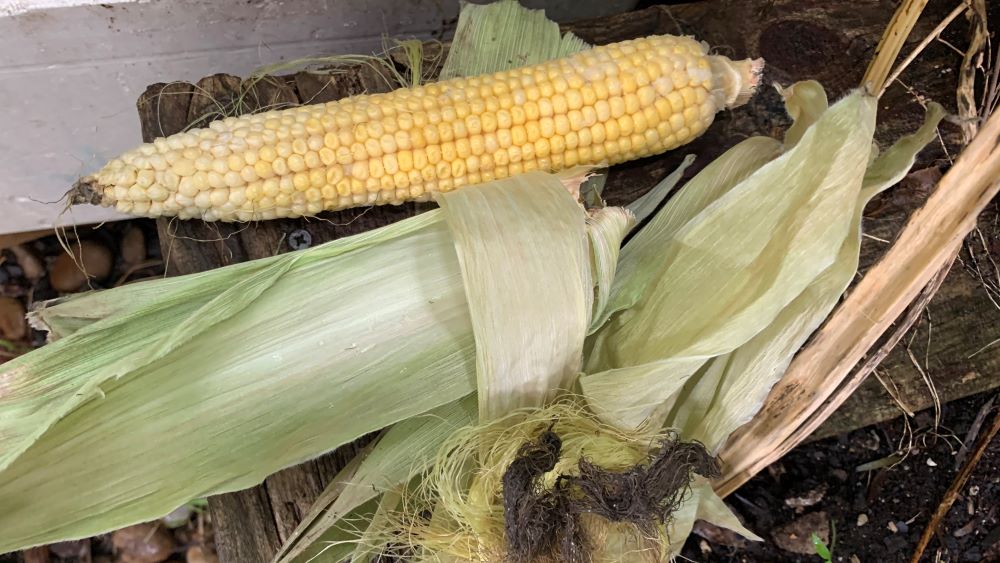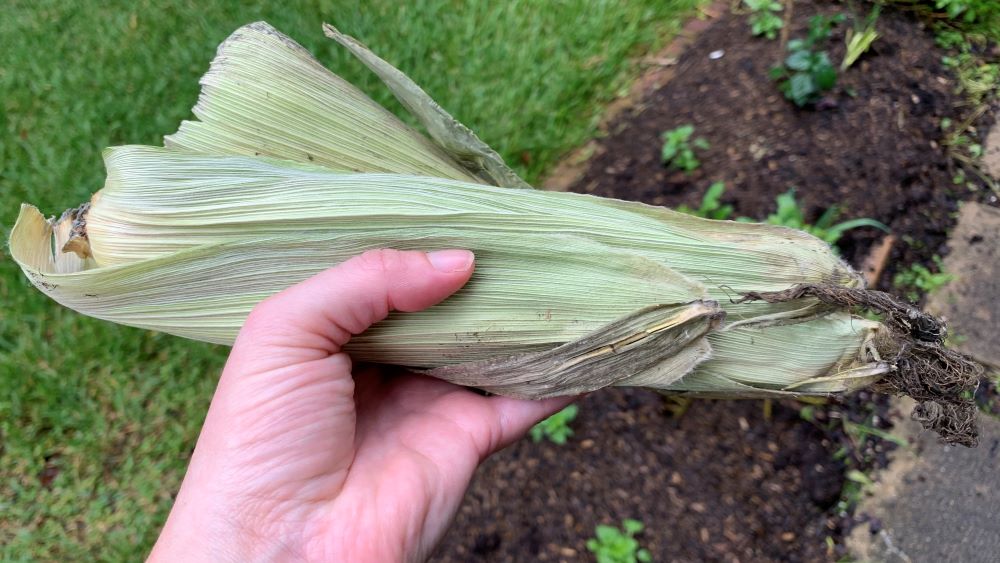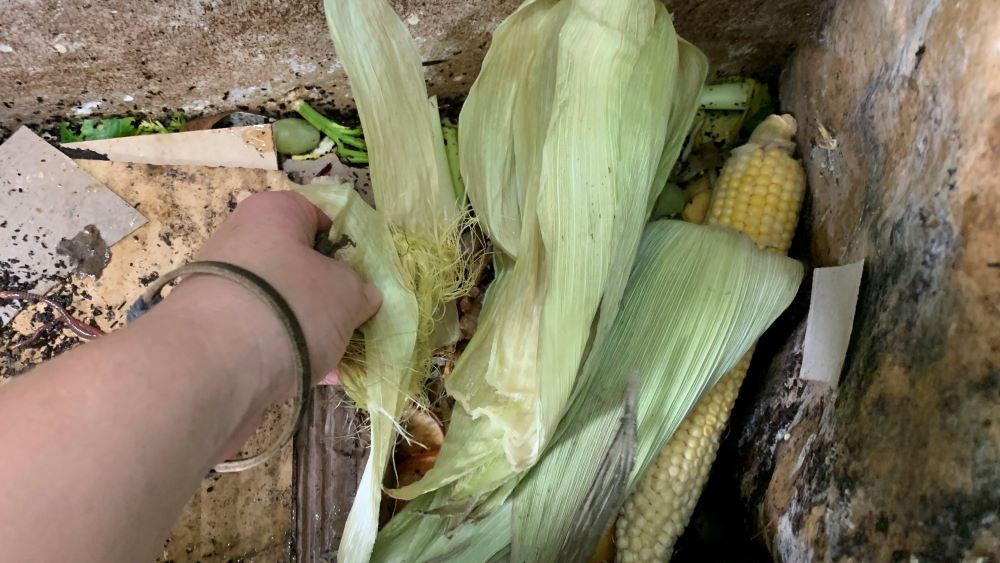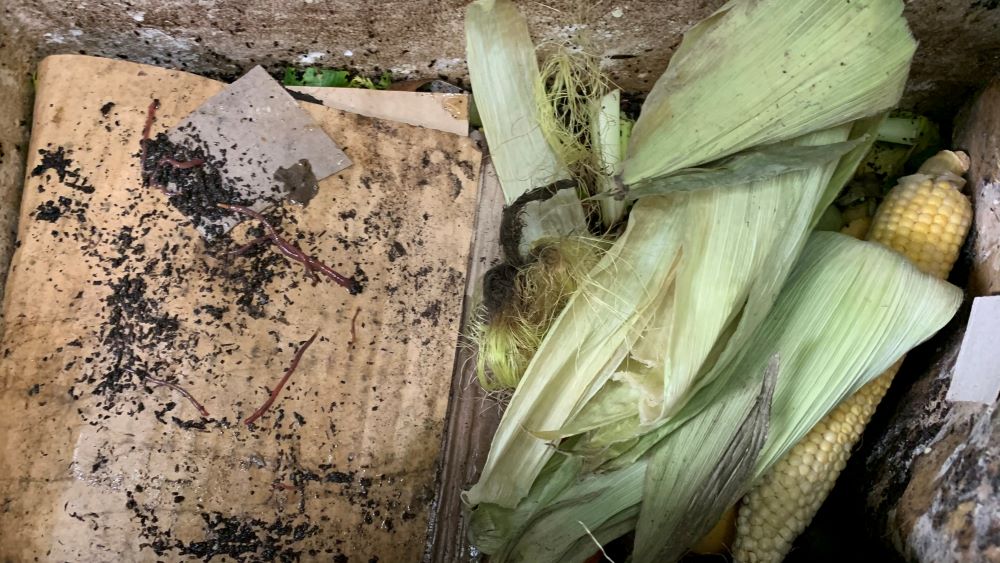Corn husks are a great food for your worm farm and will be composted by the worms quickly. Cut the corn husks into small pieces to help the worms to break it down quicker. Sprinkle the corn husks evenly across the surface of the worm farm to make it easier for worms to consume.
Soil bacteria will also work to break down the corn husks and the worms will eat them too to produce worm castings.
Worms will often wait for corn husks to start to break down before eating them. Worms will hide in larger corn husks and can be seen to gather underneath the husk in groups. Corn husks are a fantastic food for worm farms and bins large and small.

This article will explore how to compost corn husks in a worm bin. This will include my 5 tips to help them to break down quickly, avoid mold and keep a good moisture balance in your worm bin.
5 Easy tips for Composting corn husks in worm farms
Here are my top 5 tips to successfully compost corn husks in worm farms. These tips will help the worms to eat the corn husks quickly to produce lots of worm castings for your garden.
1. Cut corn husks into small pieces using kitchen scissors
Corn husks are a great material for worm bins but can be large. Cut the corn husks into small pieces using kitchen scissors. I like to cut them into 1 inch strips but cut them even smaller if you want to. These corn husks can be scattered on top of the worm bin as extra bedding.
If you let your corn husks dry out first, they will be a nice brown material to add to your worm bin to absorb extra moisture. They will give the worms somewhere to hide and will also provide them with plenty of carbon to eat.
Worms will break down corn husks within 2-3 weeks either fresh or dry. You can mix them gently through the surface of your worm farm or layer them on top.
2. Scatter corn husks evenly
Adding corn husks in a thin layer on the top of the worm farm is the best way to make it easy for your worms to reach them. The key is to add small amounts at a time and not to layer it too thick. Shredded corn husks will have lots of air pockets and room for the worms to crawl into and hide.

Adding too many fresh corn husks in once spot can cause mold to grow quickly in your worm farm. It is much better to scatter the corn husks to allow more air movement and more surfaces for the worms to reach and eat the husks
3. Start with small amounts of corn husks and work up
Start with a small handful of shredded corn husks per week. Wait for worms to break it down before adding more to work out how much your worms can consume. Worms will break down food faster in warmer weather so adjust your feeding rate as the weather changes.
Allowing corn husks to dry will mean that you can add more to your worm farm at any one time. Once husks have dried they will act more like a brown composting material and will not add excessive water to your bin.

Corn husks actually make a great bedding for worms. Combine them with straw, hay, fall leaves or sugar cane mulch and layer the on top of the worm farm. They can even be used to layer the base of the worm bin if you are starting a new one or adding a new level to your worm tower.
4. Mix through other vegetable scraps with corn husks
Worms love a variety of foods so it is always best to have a range of food scraps for the worms to choose from. Mix through other vegetable and fruit peelings when adding corn husks to your worm bin.
This will add variety to the nutrients that are concentrated in your worm castings making it great for your soil.

5. Cover the worm bin with a worm blanket
After adding corn husks always cover the food scraps with a worm blanket. You can get pre-made natural fiber worm blankets from garden centers which worms love. Worm blankets will make the worm bin darker helping the worms to feel protected and safe to dig up and eat the corn husks.
Worm blankets also help to prevent the worm bin from drying out which can quickly kill the worms. You don’t have to buy worm blanket. Recycle some old cardboard, newspaper, old sheets or even t-shirts to cover your worm bin. Any biodegradable material works well to cover and protect your worms.

Always cover the worm bin with a lid if you have one. This is important to keep rats and mice out of your worm bin
How long corn husks take to break down in worm farms
Corn husks can be broken down within a week in a healthy worm bin. Large worm bins can consume large amounts of food scraps including corn husks. Start with small amounts and increase as you work out how much your worm bin can handle.
Remember that worms will consume food quicker in the warmer months so slow down your feeding rate when the weather starts to cool in fall and winter.
Worm Composting Corn Husks | Summary
Corn husks are a great food for your worms either dry or fresh. Cut them into small pieces to help the worms to break them down quicker. Mix corn husks with other food scraps to give your worms a variety of foods to choose from.
Dry corn husks make a great natural bedding for your worms. They can be used to line the bottom of a new worm bin or as a layer on top to absorb extra moisture. Composting corn husks in worm bins is a great way to recycle them quickly and turn them into rich worm castings for your yard.
Happy worm farming.
I am an accredited practicing dietitian, experienced gardener and a dedicated cook. I love writing and sharing my experience so you can learn from my successes and mistakes.
